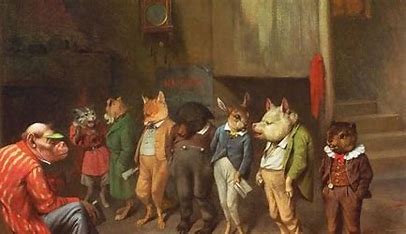
Why do we Read?
In any cohort of thinking beings, one question would always come up is reading going obsolete? In a world where every nose is glued to a screen and likes on social media determine happiness, reading does seem to have suffered a bit.
A bit of intellect can help matters. Once upon a time, every school had a library period. During that one hour, children would get the feeling of being in a magical space full of varied hues and experiences. Books were not freely available or published, were expensive, and limited in every home. Today, every child is pelted with stimulation in many forms, books are everywhere and the pocket is more indulgent. Naturally enough, reading seems a restricted field. Before getting worried about a lack of reading, parents need to demonstrate the advantages of reading through word and action.
In the language skill toolkit, reading plays a cognitive and developmental role. The four skills of language are Listening, Speaking, Reading, and Writing; a human child acquires them in this order. Once the child has understood the connection between sound and meaning in the first year, the time is right to start speaking. Listening and Speaking proficiency leads toward Reading. Once mastered, Reading acts as the cognitive bridge that consolidates learning from Speaking and Listening and trains the child to write. The Visual Word Form Area in the brain is gradually geared to move from recognizing images consciously to recognizing them at a faster pace subconsciously. E.B. Huey writes, “To completely analyze what we do when we read would almost be the acme of the psychologist’s achievements, for it would be to describe very many of the most intricate workings of the human mind.”
Even if a person were to read in the digital mode, the cognitive role of reading and its indispensable contribution can not be left out of growth and development. Moreover, the digital universe may have led to a temporary decrease in reading on hard paper but it has fostered exponential growth in the publication industry, resulting in books coming back into the life of people. “Books have always been the great love of my life. Reading is so sexy,” says 22-year-old supermodel Kaia Gerber who has also launched her own book club called Library Science. There is an increase in the number of book clubs set up by the younger lot. The figures from so many countries support the dawn of an increased interest in reading and buying books. In the United Kingdom last year 669m paper books were sold. The figures collected by Nielsen Book Data prove that it is print books that Gen Zee prefers and from November 2021 to 2022 80% of books bought in the UK were purchased by youngsters. The young ones are visiting libraries more and in-person visits to libraries have increased by 71%.
The grandparents and parents in many a household read the scriptures on a daily basis. Many homes keep a copy of a religious text in a dedicated space in the home and this space becomes a place of solace and comfort. The senior members often look for a solution in these pages when any challenging situation confronts the family. Places of worship give the best space to religious texts and their reading.
“Reading makes immigrants of us all. It takes us away from home, but more important, it finds homes for us everywhere.” Jean Rhys.
Read on, Rock on?
Professor Department of English and Cultural Studies
Panjab University Chandigarh















